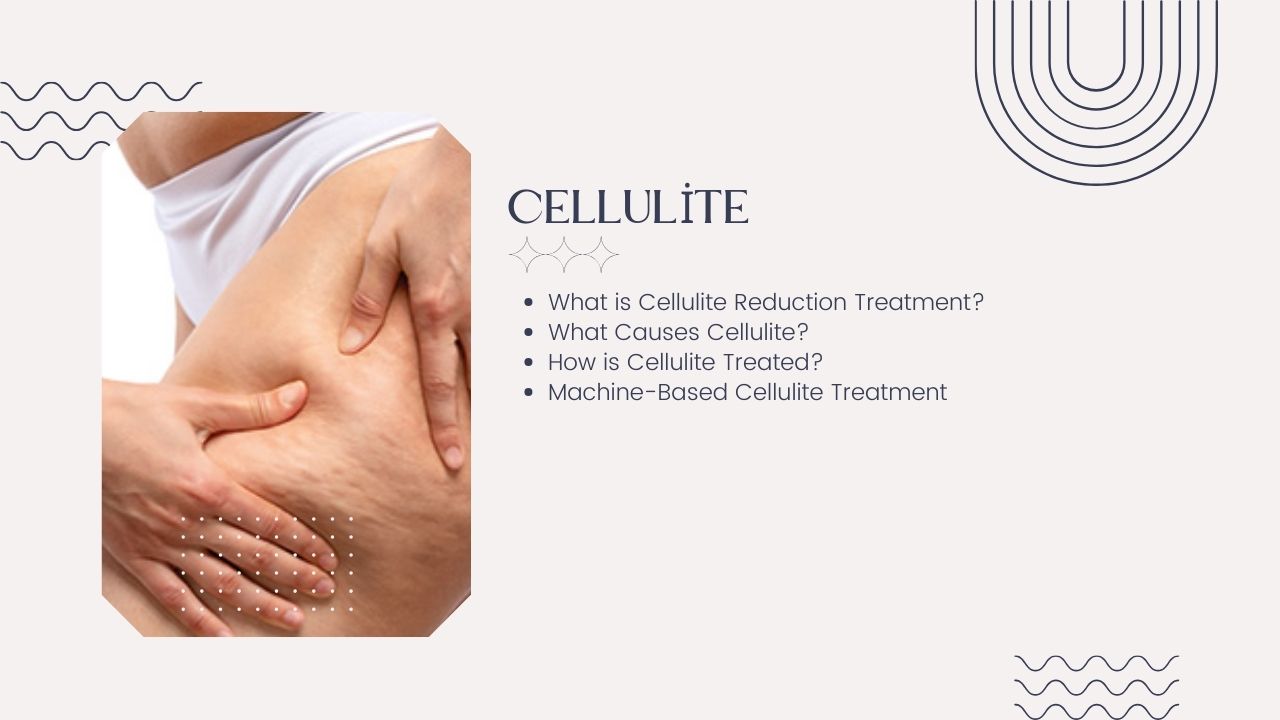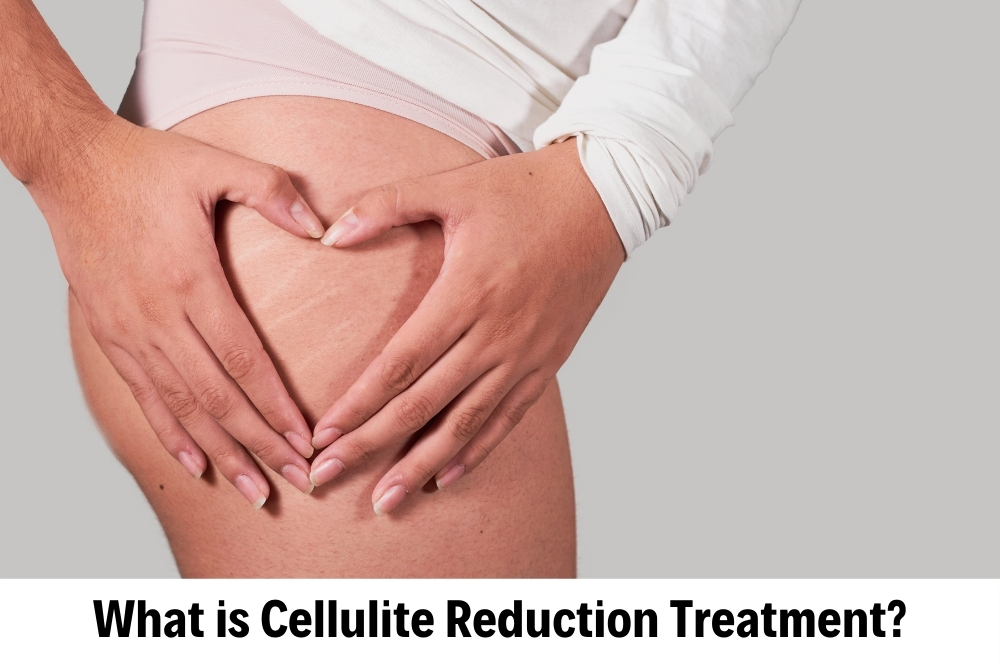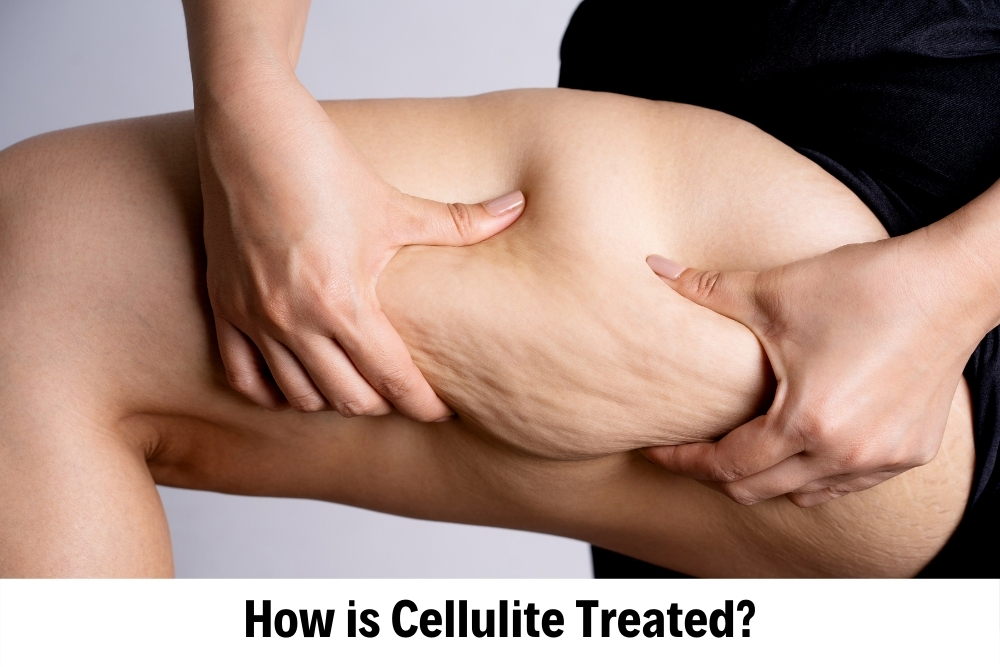Hello,
How Can We Help You?
Contact Form
Fill in the form and we will contact you as quickly as possible.
Contact us on Whatsapp
Scan with your camera app or click the QR code to start a conversation.



What is Cellulite Reduction Treatment?
What Causes Cellulite?
How is Cellulite Treated?
Machine-Based Cellulite Treatment
Cellulite is a condition characterized by areas of the skin with underlying fat deposits that result in a dimpled, lumpy appearance. It most commonly occurs on the thighs, buttocks, and hips, affecting many women and fewer men.
Cellulite occurs when fat cells beneath the skin exert pressure on the connective tissue, creating a dimpled surface. The exact cause of cellulite is not fully understood. However, it is believed to result from a combination of factors such as genetics, hormones, lifestyle, and diet.
While cellulite is entirely natural and harmless, many people seek various treatments to reduce its appearance due to aesthetic concerns. These treatments range from simple routines to more invasive procedures and encompass these treatment areas:
Diet and exercise to encourage losing weight and enhance dimpled skin. Cellulite creams and massages Laser treatment and liposuction Radiofrequency and acoustic wave therapy.

The exact cause of cellulite is not yet fully understood. However, it is believed to result from a combination of factors affecting the skin's structure, fat distribution, and connective tissue. Some factors contributing to the development of cellulite include:
Genetics: Genetic predisposition may play a role in cellulite development. If cellulite runs in your family, you may be more likely to develop it.
Hormones: Hormonal factors, including estrogen primarily, are thought to play a role in cellulite formation. Changes in hormone levels during puberty, pregnancy, and menopause can affect the appearance of cellulite.
Gender: Women are more susceptible to cellulite than men due to differences in fat distribution, connective tissue structure, and hormones. Men typically have a criss-cross pattern of connective tissue, which reduces the likelihood of fat cells bulging and creates a firmer skin with a smoother appearance.
Age: As you age, skin elasticity decreases, and connective tissue may become less flexible, contributing to cellulite development.
Body fat and weight: Excessive body fat may increase the likelihood of cellulite development. However, it's important to note that cellulite can also appear in individuals with a healthy weight.
Lifestyle factors: It's important to note that sedentary lifestyles can contribute to cellulite development. It affects weight, circulation, and overall skin health. Sedentary lifestyles such as poor diet, smoking, excessive alcohol consumption,
Poor circulation and lymphatic drainage: Reduced blood flow and impaired lymphatic drainage can contribute to cellulite formation. It allows for the accumulation of fat deposits and weakening of connective tissue.

There is no definitive treatment for cellulite, but various treatments and lifestyle changes can help reduce its appearance. Keep in mind that results may vary depending on the individual and the severity of cellulite. Here are some methods that may help:
Weight loss and exercise: Losing excess body fat through a balanced diet and regular exercise can help you get rid of cellulite. It can minimize the appearance of cellulite. Focus on a combination of cardio and strength training to build muscle tone and improve skin elasticity.
Massage: Massages can help improve circulation and lymphatic drainage, potentially reducing the appearance of cellulite. Some specialized massage techniques like deep tissue massage or myofascial release can target the layers of connective tissue.
Topical creams: Some creams claim to improve the appearance of cellulite by tightening the skin or breaking down fats. Look for ingredients like retinol, caffeine, or antioxidants that may help. However, keep in mind that results from topical creams are often temporary and may be insignificant.

Dry brushing: This technique involves using a brush with stiff bristles to stimulate circulation and exfoliate the skin. While it may temporarily improve the appearance of the skin, there is limited scientific evidence supporting its effectiveness against cellulite.
Non-invasive treatments: Some professional treatments such as radiofrequency, ultrasound, and laser therapy may help
reduce the appearance of cellulite by targeting underlying fat cells and connective tissue. These treatments can be expensive and often require multiple sessions for optimal results.
Minimal invasive treatments: Some procedures involve breaking down fibrous bands beneath the skin that contribute to cellulite formation. These treatments are more expensive and may have a longer recovery time, but they can provide more significant and long-lasting results.
Lifestyle changes: Maintaining a healthy diet, staying hydrated, and avoiding smoking can improve overall skin health and reduce the appearance of cellulite.
Cellulite is a common cosmetic concern, and there are various machines and treatments available to help reduce its appearance. Some popular options include:
Radiofrequency (RF) devices: Morpheus8 is an advanced fractional RF device that combines microneedling with radiofrequency energy. This treatment penetrates deep into the skin, stimulating collagen production and increasing skin elasticity, potentially reducing the appearance of cellulite.
Ultrasonic devices: High-Intensity Focused Ultrasound (HIFU) machines use ultrasound energy to target fat cells, breaking them down and supporting the body's natural fat removal processes, potentially reducing the appearance of cellulite.
Mesotherapy: This treatment involves injecting a mixture of vitamins, enzymes, and other ingredients directly into the mesoderm (middle layer) of the skin. The injections target fat cells and improve circulation. Mesotherapy can help reduce the appearance of cellulite and improve skin tone.
It's important to note that individual results may vary, and multiple treatment sessions are often necessary for optimal results.
We'd love to hear from you. Please fill out the form.
Contact Form
Fill in the form and we will contact you as quickly as possible.
Contact us on Whatsapp
Scan with your camera app or click the QR code to start a conversation.